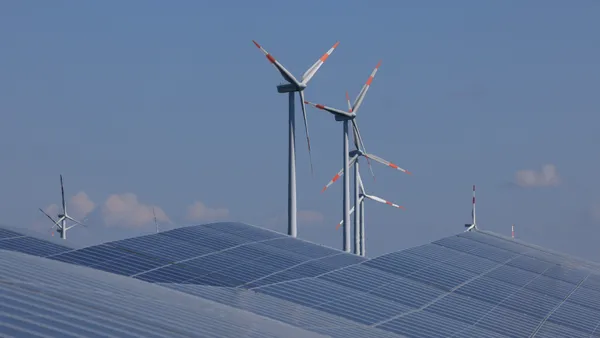Dive Brief:
- The city of Detroit, in coordination with nonprofit organization Greening of Detroit, intends to plant tens of thousands of trees in two, quarter-square-mile vacant city spaces to demonstrate how greening strategies can improve everyday life in the city, the Detroit Free Press reported.
- Maurice Cox, the city’s director of planning, told the Free Press the project will target two city districts and that philanthropic organizations will be footing the bill. The city’s goals for the program include creating jobs for city residents as landscape workers, reducing air pollution, and minimizing stormwater and snowmelt runoff.
- Every vacant lot within the designated districts will either be planted with trees or given some other "green" or "blue" features, such as rainwater gardens, flowers or urban farms. City officials said they will decide exactly what will be done with each parcel after talking with residents and getting "buy-in" in those communities.
Dive Insight:
Detroit has an estimated 20-30 square miles of vacant space, and city officials hope to demonstrate ways to turn those bare pieces of land into positives for the city. Detroit has experimented with urban gardens, but this larger plan could be a model for postindustrial cities all over the world, the Free Press reported.
Detroit’s greening plan will also test whether it can deliver the same economic benefits as more traditional city planning projects, such as new construction.
"We want to show that you can increase property values without building a single house in a neighborhood," Cox told the Free Press. "Research shows that the greener the neighborhood the higher the property values, so we think we can have an impact on that."
In addition, Rebecca Salminen Witt, president of the Greening of Detroit, told the Free Press the organization plans to hire up to 100 residents this winter in order to train them for landscaping work next spring and summer.
"Our goal is to recruit people from the neighborhoods where these things are happening," she said. "A change in landscape feels a lot better to you when someone from your neighborhood is chosen to do the work."
The Detroit project is similar to green roofs, in that green roofs provide many of the same benefits city officials hope to see in Detroit. In fact, because of a green roof's ability to control stormwater runoff — as the average green roof absorbs 50%-65% of average rainfall in most areas — it can save a city millions in investments in infrastructure, which would otherwise have to be built.














